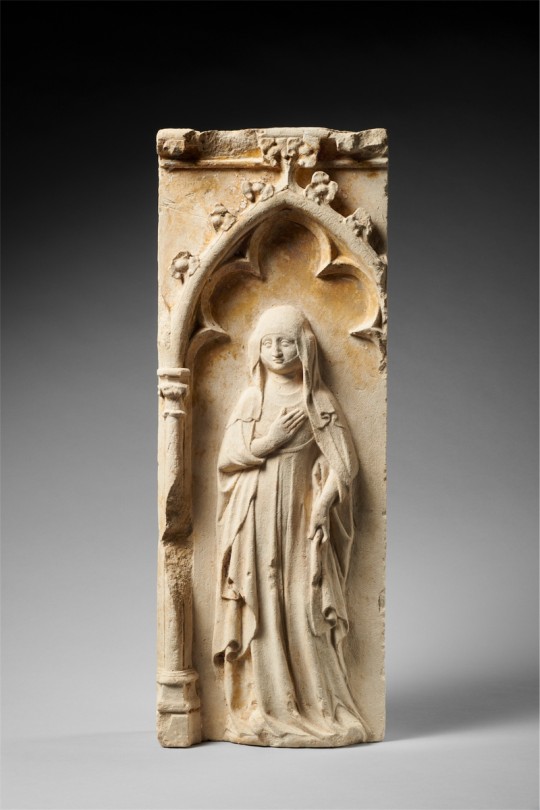Partnership with les Musées de Chaumont
Through a partnership with Chaumont Museums (Haute-Marne, France), the Fondation Gandur pour l'Art is lending a 14th century bas-relief sculpture to the Chaumont Museum of Art and History on a long-term basis. For a period of seven years, this piece will has joined two other fragments from the same tomb.
This 14th century bas-relief, which originally decorated the base of a tomb at the church of Saint-Pierre-ès-Liens in Autreville, is to be reunited with two other fragments from the same tomb, now preserved in the Chaumont Museum of Art and History and exhibited in the sculpture gallery there. A fourth fragment completed the set thanks to a parallel loan accorded by the Archaeological Museum of Dijon.
Bringing together these four elements makes it possible to reconstruct in its entirety a frieze of seven « weepers », mourners from among the deceased’s relations, who was probably a lord of Autreville belonging to the Châteauvillain family. The polychrome decoration still clearly visible on the bas-reliefs attests in any case to the sumptuousness of this funerary monument.
This partnership meets two of the key objectives of the Fondation Gandur pour l’Art since its creation in 2010. It ensures the sharing of its collections by allowing one of its artworks to travel to a public institution outside Switzerland. It also reflects its heritage preservation mission by helping to reunite fragments from the same monument, thus making each of them more coherent and comprehensible for the duration of this combined presentation at the Chaumont Museum of Art and History.
Chaumont Museum of Art and History, 15 septembER 2018 - 15 septembER 2025
Long term loan. Exhibition in the sculpture gallery on the ground floor of the Chaumont courthouse.
Press review
La Voix de la Haute Marne — 15.02.2019
« Le tombeau d'Autreville révélé au musée »
La Voix de la Haute Marne — 08.02.2019
« Une œuvre qui garde ses secrets »



